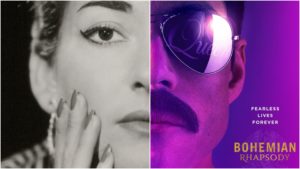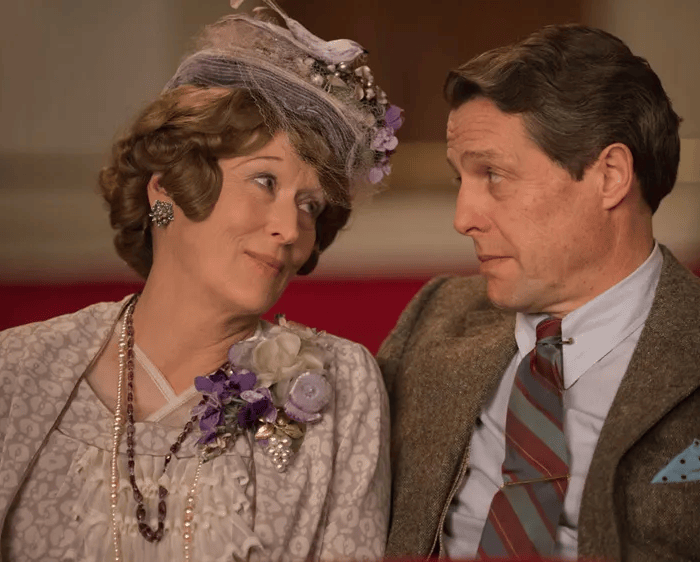
Opera Meets Film: Freddie Mercury Explored Through Maria Callas & Puccini In ‘Bohemian Rhapsody’
By David Salazar“Opera Meets Film” is a feature dedicated to exploring the way that opera has been employed in cinema. We will select a section or a film in its entirety, highlighting the impact that utilizing the operatic form or sections from an opera can alter our perception of a film that we are viewing. This week’s installment features “Bohemian Rhapsody.”
Queen’s iconic lead singer Freddie Mercury was a major lover of opera. Many know of his collaboration with Montserrat Caballé on “Barcelona,” the result of the famed Rockstar adoring the voice of the Spanish soprano.
The famed song “Bohemian Rhapsody” itself was inspired by opera and was, in fact, the centerpiece single from the band’s famed “A Night at the Opera.” And this is perhaps the best place to start with how opera interacts with the latest biopic by Bryan Singer, “Bohemian Rhapsody.”
Two Icons
The band is already well on its way to great success, but Freddie, as portrayed by Rami Malek, is bored with continuing on with the same musical formulas. So during a pitch with record executive Ray Foster, Freddie goes over to a record player and puts on Maria Callas singing the Habanera from “Carmen.”
The choice of music works on a number of levels. It is an iconic opera selection and would immediately connect with any film audience as a solid representation of opera.
But the choice of the recording goes far deeper. The famed Habanera is Carmen’s own anthem to love and its rebellious nature. She can’t be trapped by anyone and in this way, the gypsy herself is just like Freddie, who will not be trapped by the whims of a record executive who wants to stamp out his creativity. And it is this rebellious nature that makes both characters icons.
Secondly, the choice of Maria Callas is not insignificant. Callas, for many, was the greatest icon of 20th-century opera. She changed the way people viewed the artform and pushed its limits and boundaries. Moreover, like Freddie, she was always in the spotlight, her privacy constantly being invaded in much the same manner as his. At one point in the film, a character notes that “I’ve never seen anyone interact like that with an audience.” He says this regarding Freddie rapport with concertgoers, revolutionary for its time in much the same way Callas was in her time. In essence, Freddie Mercury was as revolutionary to rock as Callas was to opera. They remain undisputed legends to this very day.
Also as an interesting and yet related sidenote, the character of Ray Foster is based on EMI chief Roy Featherstone; Callas was one of EMI’s iconic artists until the company was taken over by Warner Classics.
That’s how the film explores Freddie Mercury the artist. But opera is also used to explore his personal and more vulnerable side.
Suffering & More Suffering
Puccini makes two appearances in the film during two pivotal scenes between Freddie and his wife Mary Austin. In the first scene, we hear Cio-Cio San’s “Un bel di vedremo” from “Madama Butterfly” as Freddie proposes to Mary and tells her that she is the love of his life. He would compose the famed song “Love of My Life” for her, but of course, the love between them would not last as they hoped.
Scenes later, reveals that he is gay and their relationship starts to fall apart. A few scenes later, she is now living in her own house across from him. He tries to reconnect with her from their windows, and it is here that we hear none other than Montserrat Caballé singing Liu’s “Signore Ascolta” from “Turandot;” it’s undeniably a tribute to one of Mercury’s favorite opera stars, but so much more (the timing of the film’s release with her recent death might make this scene even more emotional, by the way).
In both instances, the music is actually part of the diegesis of Freddie’s world, acknowledging his love for opera rather openly.
Puccini’s operas are known for the suffering they impose on their heroines. In the case of the two excerpts used, Cio-Cio San is abandoned by the man that professes love to her on their marriage day and Liù is made to suffer for the man who also abandons her. Both women end up killing themselves for that ill-fated love.
On a purely textual level, “Un bel di” playing while Freddie proposes marriage is a reminder that this marriage won’t last, while Liù revealing her feelings for Calaf mirrors Freddie trying to remind Mary that he still loves her, only to be rejected by Mary.
But on a deeper emotional level, both arias are also explorations of loneliness and longing, a major theme of Freddie’s life as explored in the film. Mary is the only character that is directly linked with opera in this manner, which adds emphasis to her importance in his life. Losing Mary for him also means losing the family he thought he had and the stability it could offer.
The result is that like the two heroines, he goes looking for love and in this search, he takes on self-destructive behaviors that will ultimately lead to his untimely demise. Freddie Mercury’s personal life, as portrayed in the film, is one of Pucciniesque suffering.
Categories
Opera Meets Film

